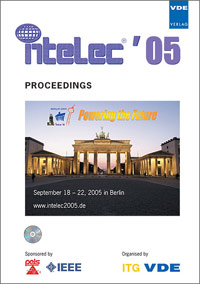look back at forty years of lead-acid-battery development - A survey especially regarding stationary applications
Konferenz: Intelec '05 - Telecommunications Conference - 27th International Telecommunication Energy Conference
18.09.2005 - 22.09.2005 in Berlin, Germany
Tagungsband: Intelec '05 - Telecommunications Conference
Seiten: 7Sprache: EnglischTyp: PDF
Persönliche VDE-Mitglieder erhalten auf diesen Artikel 10% Rabatt
Autoren:
Berndt, D. (VARTA Batterie AG)
Inhalt:
Forty years ago, lead-acid batteries were already the dominating electrochemical storage system. As standby batteries, they mostly were used as large central batteries of flooded cells. Although they already represented a matured system, development went on, mainly in the areas of safety aspects and reduction of maintenance expenses. An important turning point was the introduction of the valve-regulated design, abbreviated as VRLA batteries, characterized by immobilized electrolyte and an internal-oxygen cycle. This design implies a number of advantages: Spillage of acid no longer is possible, the battery can be installed in any position, gassing by overcharging is largely reduced, acid fumes do not escape, and, as a consequence, water loss can be neglected under normal operational conditions. Furthermore, this design extends the possibilities of lead-acid batteries in various aspects, e.g., discharge/charge cycles are feasible in a partly charged state. But there also are a number of constraints that had to be learned, partly by sobering and costly experience. All materials have to be scrutinized and selected to minimize water loss. Special absorbent separators had to be developed, and there must be a certain balance between corrosion and hydrogen evolution. Internal catalysts are a possibility to improve this balance.


